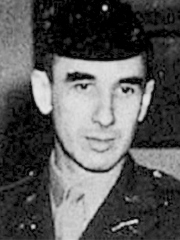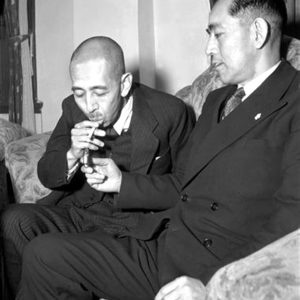Since Japan surrendered to the Allies in August 1945 , US policy toward Japan has been largely dominated by conservatives with the intention of financial capital and multinational corporations. New dealers of social democratic sympathizers gathered at the Supreme Commander for the Allied Powers (GHQ) Government Section (GS), which implemented the initial occupation policy to thoroughly democratize and demilitarize, in Japan in line with the Potsdam Declaration. Toward the establishment of a democratic government, the government first ordered five major reforms: women's suffrage, labor union law enactment, education system reform, oppressive legal system abolition, and economic democratization .
However, by May 1947 , when the highly democratic Constitution of Japan based on the GS draft came into effect , an informal group had already been formed in Washington's Department of State and the Department of Defense. They were intending to put a brake on Japan's democratization and give top priority to making it an anti-communist fort.
 [Photo] Charles Kades, who was at the center of drafting the GHQ for the establishment of the Constitution of Japan. As a section chief and deputy chief of the GHQ/ GS, he contributed to the democratization of Japan. However, in June 1948, when the American Council on Japan (ACJ), the core organization of the Japan Lobby, was officially launched, he was dismissed as the bribery side of the Showa Denko scandal, and returned to US in May of the following year. Behind the scenes, it is believed that Willoughby and others of the GHQ Chief of Staff 2nd Division, who were hostile to GS and engaged in anti-communist work, had a dark move.
[Photo] Charles Kades, who was at the center of drafting the GHQ for the establishment of the Constitution of Japan. As a section chief and deputy chief of the GHQ/ GS, he contributed to the democratization of Japan. However, in June 1948, when the American Council on Japan (ACJ), the core organization of the Japan Lobby, was officially launched, he was dismissed as the bribery side of the Showa Denko scandal, and returned to US in May of the following year. Behind the scenes, it is believed that Willoughby and others of the GHQ Chief of Staff 2nd Division, who were hostile to GS and engaged in anti-communist work, had a dark move.
This group, commonly known as the Japan Lobby, was officially launched in June 1948 as the American Council on Japan (ACJ). This move pioneered the Red Purge in the United States from around 1948 to the early 1950s , eliminating what appears to be Communists and their sympathizers.
Those who gathered in the Japan lobby felt a sense of crisis that thorough democratization by the New Dealer of the Government Section (GS) would establish a communism-government in Japan. And in 1946 , the government dignitaries during the war was detained as a war criminal. They began planning the early release of people and war cooperators. Above all, they prioritized the interests of the huge US capital and conglomerates. It was equal to stopping the expansion of communist and socialist power on a global scale.
September 111945, the25 people ,including ministers of the Tojo Cabinet 13 mainly were arrested and detained in the Sugamo Prison. The former Minister of Commerce and Industry, Nobusuke Kishi, was released without charge on December 24 , 1948 , the day after the execution of seven A-class war criminals, including Tojo . Compared to Okinori Kaya, who was the Minister of Finance of the Tojo Cabinet and would return to politics after the war to assist Kishi, was released on parole in September 1955 , the unusual release of Kishi from early acquittal stands out. By the way, Kaya is said to have been opposed to the opening of the war with the United States and Britain with Foreign Minister Shigenori Togo in the Tojo Cabinet from beginning to end.

[Photo] Eisaku Sato (right), comforting his released brother, Nobusuke Kishi, at home.
There has been much talk about the background to Kishi's early release, which was not even charged. However, the key is the intention of former Ambassador to Japan Joseph Grew (who was appointed as Under Secretary of State twice ), who is the core ACJ of the US Japan Lobby . Grew praised Kishi as follows in his memoir "Ten Years in Japan".
"Kishi is one of my most respected friends in Japan, and my personal friendship and affection for him does not change anything."
It can be said that Kishi's imprisonment was only form. So how did Glue and Kishi become a friend of mine?
(Continue)
